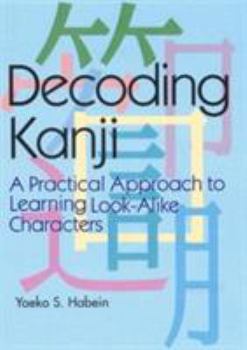Decoding Kanji: A Practical Approach to Learning Look-Alike Characters
Select Format
Select Condition 
Book Overview
There are many things that make learning to read Japanese difficult, and all of them have to do with kanji. It has been suggested that kanji be banned from use, which might prove awkward considering that they have been a part of the language for over a 1,400 years. It has also been suggested that they be simplified, and a half-hearted attempt was actually made to do just that. But, in the end, the student has only one recourse-which is, to learn them. Of the many difficulties presented by kanji, this book takes up one: the fact that many of them look so very much alike. In your early years as a student, you may think that what you see before you is the simple character for "big," only to be told that, sorry, that's its look-alike, "dog." Later on in your career, you see what you believe to be the recently learned "rope," only to be told that it is its kissing cousin "steel." Years later, with a great deal of experience under your belt, you are still caught flat-footed when you mistake "samurai" for "wait." This book helps the student to overcome this problem of kissing cousins and spitting images, to become aware of the subtle differences that distinguish one kanji from another. With numerous exercises and charts, the tell-tale signs that give each kanji away are indelibly imprinted on the mind.
Format:Paperback
Language:English
ISBN:4770024983
ISBN13:9784770024985
Release Date:December 2000
Publisher:Kodansha
Length:144 Pages
Weight:0.40 lbs.
Dimensions:0.4" x 6.9" x 4.9"
Customer Reviews
1 rating
A decent read
Published by Thriftbooks.com User , 14 years ago
This is a decent book to supplement your kanji learning. There are probably better texts out there, but the price was right, and it's pretty fair for what it is.






